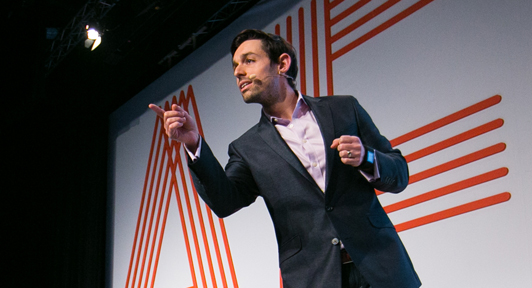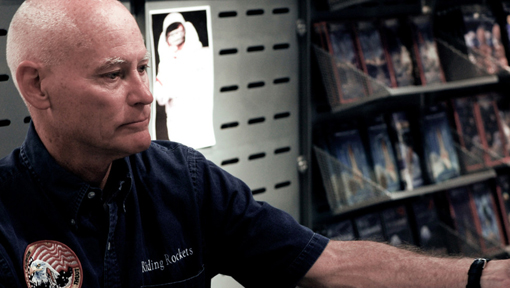
Becoming a Leader that People will Follow
| Given a moderate amount of innate capacity and a real desire to grow, most people can learn to be reasonably good leaders. | |
| |
 | What are some of the characteristics of a good leader? And, which of these traits can be learned, rather than inherent? |
 | I’ve noticed, over the years, that some leaders seem to elicit commitment, enthusiasm and productivity while others don’t seem to elicit much of anything. It’s impossible to be a truly effective leader if others don’t embrace your leadership. We’ve identified a handful of core attributes in a leader that people look for before they fully sign up to follow them; these attributes apply from culture to culture and throughout time. We want leaders to be:
In Leading So People Will Follow, (both the book and interactive keynotes based on its model) I dig deeply into each of the six, defining them and offering insights and activities for developing each attribute. I guess that makes it clear that I believe these traits can be learned! At Proteus, our 25-plus years of working with leaders has shown this, as well: given a moderate amount of innate capacity and a real desire to grow, most people can learn to be reasonably good leaders. |
 | What is the most important thing a leader can do to prepare for future challenges? |
 | I’ve come to believe that the key skill for any leader, or any person at this point in history, is the ability to learn new skills, knowledge and ways of operating quickly and continuously. In Be Bad First, I offer the ANEW model: four simple but powerful mental skills to support you in becoming that kind of high-payoff learner. ANEW stands for Aspiration, Neutral Self-Awareness, endless Curiosity, and Willingness to Be Bad First.
In the book (and in the Be Bad First interactive keynotes) I explain all four, and provide practical insight about how to develop each one. By getting better at these four things, especially the fourth one, it’s possible to become a master of mastery, and thrive through change rather than get left behind. |
| Most of our reality exists inside our own heads. | |
| |
 | How do people “get in their own way” and how does this adversely affect their ability to lead? |
 | It’s a great question. If you think about it, most of our reality exists inside our own heads. In other words, the way we experience our lives depends largely on two factors:
For example, imagine two leaders about to make an important presentation to their board. The first thinks, “I’m excited about having this opportunity. It’s a little nerve-wracking, but I know my material really well, I think I’ve organized it in a simple and compelling way, and I know it’s a topic this board needs to understand. I’m ready to share this, and I’m prepared to take questions.” The second thinks, “Oh my god, this could be awful. What if they hate it? I always get so nervous when I present. I just know I’ll forget something or mess something up. And my boss will be there too. Oh, why did I agree to do this?” Which person do you imagine will do a better job? Which one will come across as more confident? Which one will have a better experience? If you can manage your self-talk, that internal monologue that constantly runs inside your head, you have a better shot at “getting out of your own way.” |
| If you, as a manager, incorporate the answers to these questions into your daily actions, employees will be pleased and proud to work for and with you. | |
| |
 | What are some of the key elements to effective people management? |
 | I also love this question. In Growing Great Employees, a book I wrote about this very topic, I explore the core skills needed to manage people consistently well so you can support them to achieve their potential.
When I present on this topic, I ask and answer five questions that managers can use daily to help them become great managers of people:
To give you the super-compressed version of my answers to each one: I believe that a manager needs to begin with listening. I see skillful listening as the foundational skill for all productive relationships, personal or professional. The core of figuring out what and who you want lies in clearly envisioning the kind of work place you want to create along with the kind of person who will support you in creating it, and then making sure that all the mechanisms for finding and hiring line up with that clarity. Getting them started involves understanding the three key questions anyone has when entering into a new situation, and answering those questions in ways that give people a chance to settle in and feel competent and motivated. In the how do you keep them growing section, I focus on the managerial skills and attitudes that support and enable people to do their best work, day-to-day. Finally, in talking about where to draw the line, I recommend ways to keep from being held hostage to poor performers, as well as clear, respectful and effective approaches for helping them improve or letting them go. If you, as a manager, incorporate the answers to these questions into your daily actions, employees will be pleased and proud to work for and with you. They, the business and you will all benefit. |
 | Why is it important for companies to invest in building leadership and management skills? |
| Investing in building good leaders and managers is a spectacular example of the power of 'doing well by doing right.' | |
| |
 | There’s a growing amount of research available today that shows how better managers and leaders impact a company’s performance. Here’s a post I wrote for Forbes citing just one study on that topic. Investing in building good leaders and managers is a spectacular example of the power of “doing well by doing right”: it’s good for the managers, their employees, and your bottom line. |
 | When someone tells you “be more strategic,” what should you do? |
 | Most people have that question. It’s fascinating to me that we all talk about this a great deal – and even agree that it’s a good and useful thing, but there’s little or no agreement as to what it means. In Being Strategic, I offer a definition based on my 30 years of observing good leaders: that being strategic means consistently making those core directional choices that will best move you toward your hoped-for future. In the book, and when I speak on this topic, I offer a practical approach for getting better at doing this. We’ve found that when people get better at these skills, it helps them create the future they most want for themselves in every aspect of their lives.
======================================== To bring Erika Andersen to help improve your organization's leadership, please contact Michael Frick at: Mike@Speaking.com. |















